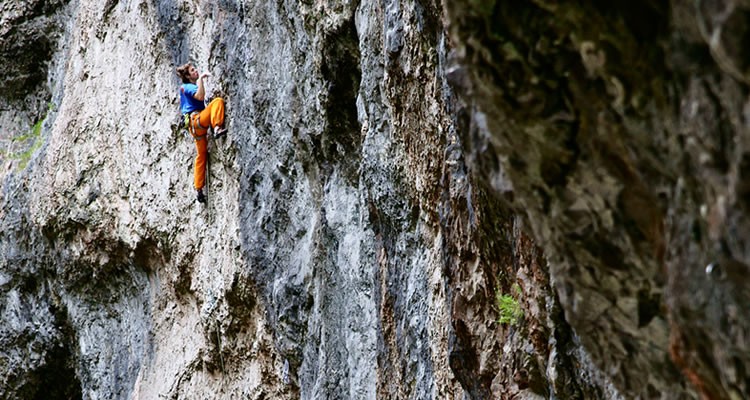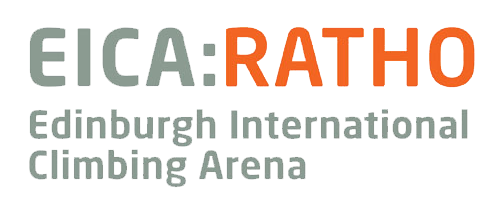Setting the Limit
- Font size: Larger Smaller
- Hits: 7277
- 0 Comments
- Subscribe to this entry
Following a recent Facebook discussion, I have been insired to write this blog on how climbers progression is limited by their surroundings. This is more noticeable in young climbers as you can see their progression through the grades more noticeably in a shorter period of time.
The youth climbing scene in Scotland has gone through a massive boom over the last 10 years with respect to high performance climbing both in competitions and outdoors. This is true in every aspect of climbing:
- Competitions
- Sport Climbing
- Bouldering
- Trad Climbing
- Mixed Climbing
- Alpinism
As I am more involved in the training of Youth Competition Climbers, Sport Climbers and Boulderers, I am always exposed to the effects the environment at an indoor wall or crag affects their development.
Setting the Limit
The title of the blog post, so probably a good place to start. What do I mean by "Setting the Limit"? In actual fact I literally mean "Setting" a route or boulder. How can you expect a climber to achieve the highest level they can be without them able to see it?
Route-Setting the Limit on the EICA Bouldering Walls
Climbing is a unique sport in that we can look at a wall and providing we have enough motivation and imagination, we can see ourselves climbing it. It might be a 7a, 8a, 9a even 10a, but the fact is we can see the final product of our effort long before we have achieved it. This is incredibly useful for motivation and goal setting, a big part of the training plan.
In other sport such as Swimming, Running and Cycling, our goals are set more by what others have achieved before us. An example of this was when the 4-minute mile was finally done and within 10 years of that many runners had gone on to achieve that and better! This is no coincidence, it's just another example of setting the limit. When the limit has been set, those with the imagination and will power will rise to beat it thereby setting a new limit to beat for the next generation of athletes.
In Climbing we are lucky yet again as we can have this aspect of "Setting the Limit" as well. When someone climbs a hard First Ascent, we know it is possible now, so the ability to break this barrier is subsequently easier than it was for the first ascenisonist (who may have thought the route impssible before making the ascent).
In an indoor wall, where 99% of my coaching and training occurs, setting the limit for climbers is the most important thing to do if we want to see the their progression in climbing occur. A friend of mine Stuart Burns is head coach at Boulders in Cardiff where the hardest route is 7c+. It's therefore natural that the youth climbers will set that as their limit to reach. At EICA, the hardest route is 8b+ (at the moment) which means the youth climbers will set that as their limit to reach. At a French wall that Nat has been climbing at, the hardest route is 8c+, meaning that the French kids will set that as their limit.
Does this mean that all we need to do is set really hard routes and kids will climb 10a if we set that as the limit?
The Limit that Surrounds You
This is not the case, you can't simply expect climbers to rise to climbing the hardest routes at the wall simply by setting them, but it is a step in the right direction. There needs to be the element of competition surrounding you as well. It's fair enough to say, "I am going to climb that 8a there one day", but realistically, how much can you push yourself towards that goal without the thought that someonelse is trying to reach it before you?
With an element of friendly competiton between peers at a similar level with similar aspirations and goals - this is when you will see the real gains in performance. You try harder on your climbs, train harder during the week and aim higher than ever because of the competition. As long as the competiton isn't allowed to become a negative experience, you will gain a lot from it.
I have always tried to pair up my coached kids together so as to instill this friendly competition. A few examples:
William Bosi + Angus Davidson
Angus is 2-times British Champion and in previous years Scottish Champion as well as competing at a very high level in EYC's in his first year in Youth B. William is this years Scottish Champion, as well as Scottish Bouldering Champion and 4th in the World as of Singapore 2012.
Together they are a great partnership and push each other to make the biggest gains in performance.
Angus + William (The Champs)
Youth C/D Boys Coaching Group
4 Boys I coach that are around the same age and level of performance. Sam, David, Connor and Ewan have all go their own unique styles and strengths and can challenege each other at the wall every week. Whenever one does something hard, the others are eager to prove that they can do it too, sometimes they get shut down and other times they succeed, but it's always good fun and as long as the attitude is good they keep improving.
Connor crushing 7b!
Make it Fun and Competetive
If you want to get the most out of your sessions, adding a competetive element is important. Train with people that you are friends with and who are a little bit better than you so you can learn from them and push yoursef more. You will always climb harder with someone who is better.
For more examples of this process in work, just have a look at the Austrian Team and French Team. The Austrians training in Innsbruck train together and see each other at the wall everyday. Because of this they push harder than ever and because the best guys at the wall climb 9a+, the kids growing up there see that as their goal.
Unfortunately, I only climb 8c so I hope my kids can have the imagination and will power to see past how bad at climbing I am and realise that the limit is now 9b+ thanks to Mr Ondra!








